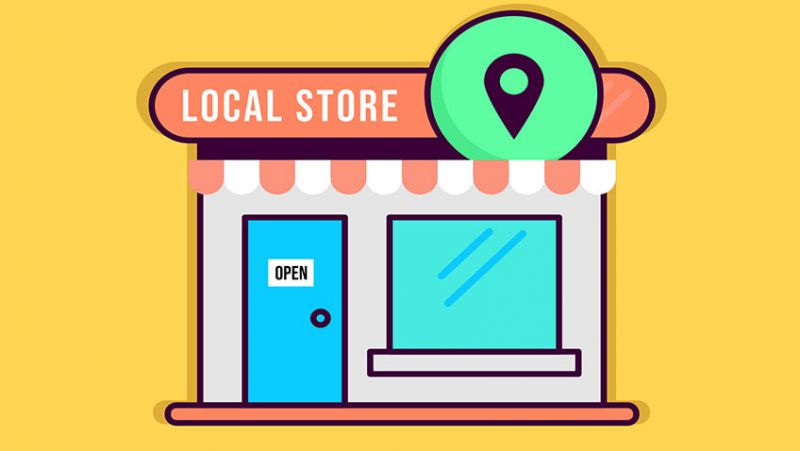
The marketing landscape is evolving faster than ever, especially in the home improvement and interior design sector. For small business owners working with DIY enthusiasts, stylish young professionals, innovative architects, and hands-on tradespeople across the UK, staying ahead of the game is crucial. Your target market is already online, scrolling, searching, and shopping – the real question is: can they find you?
Whether you're selling bespoke shelving units, eco-friendly bathroom fittings, or premium decorating services, embracing the right marketing trends can help you differentiate your brand, attract your ideal customers, and drive real sales. Let's dive into the top five marketing trends your small business simply can't afford to ignore in 2024.
1. Short-Form Video Content (Especially for Social Media)
Social platforms like Instagram, TikTok, and YouTube Shorts have revolutionised how people consume content. Your future customers are watching quick, informative, and entertaining videos – often before making a purchase decision. For industries involving design and DIY, where visual inspiration rules, this is your chance to showcase your products in action.
Picture this: a 30-second TikTok showing a floating shelf being installed in real-time, or a Reel of your paint range transforming a dull lounge into a Scandi-style oasis. These micro-moments build brand familiarity, trust, and – importantly – traffic to your website.
You don’t need a film crew to get started. Use a smartphone, good lighting, some trending music, and keep it real. Show your products being used in actual homes, highlight customer testimonials, or do tool tutorials for tradespeople. Keep them authentic but polished.
By regularly posting short-form videos, tagging your location (important for UK-specific audiences), and using relevant hashtags (#HomeInspoUK, #DIYDecor, #MadeInTheUK), you gain visibility, boost engagement, and build a solid online community.
2. Local SEO Optimisation & Google Business Profile
Local SEO is one of the most powerful, yet underused, tools small business owners can utilise – particularly when your customers are in the UK. People searching for skilled tradesmen, specialised furniture suppliers, or design consultants want someone nearby. That’s where Local SEO comes in.
Start by setting up and regularly updating your Google Business Profile. Include relevant keywords like “bathroom renovation in Bristol” or “Manchester carpentry services” in your listing. Make sure your business name, address, and phone number (NAP) are consistent across the web – from directories to your social pages and your site.
Encourage customers to leave reviews, especially with photos of the finished result. Google loves fresh content and real-life engagement. Higher reviews and activity mean better local rankings – and more chances for the right customer to find you when they search, “best kitchen fitter in London.”
Also, create website content tailored to your service area. Include local landing pages or blog posts about local trends (e.g., "Top 5 Loft Conversion Trends in the Midlands") to boost relevance for search engines and resonate with local audiences.
3. Personalised Email Marketing (That Isn’t Spammy)
Email is far from dead – it’s evolving. If done right, personalised email campaigns can nurture interest, convert leads, and keep loyal customers coming back. DIYers and design lovers are often researching, planning, and updating rooms throughout the year – so being front-of-mind when the time is right is key.
Use email software like Mailchimp, Klaviyo, or ConvertKit to segment your audience. Create lists based on things like customer location, past purchases, or even which blog post they clicked on. Then, tailor your messaging accordingly.
For example, someone who bought reclaimed wood panelling might get a follow-up guide on “How to Style a Rustic Bedroom Wall,” while a professional designer might appreciate tips on “Sourcing Sustainable Materials in the UK.” The more relevant your communication, the more likely recipients will engage.
Don’t forget to include seasonal campaigns and limited offers – perhaps a spring discount code on paint ranges or early access to new tile designs. Make it visual, valuable, and with a call-to-action like “Book Your Free Design Chat” or “See Our Range.”
4. Sustainability Marketing – More Than a Buzzword
Whether it's a Gen Z flat renter in London or a trusted tradesman in the North, people across the UK are becoming more environmentally conscious, and they expect the brands they support to follow suit. Sustainability is no longer a 'nice to have' – it's a defining purchasing factor.
So, how can your brand take advantage of the sustainability trend while staying authentic? Start by highlighting the eco-friendly aspects of your products or services. Are your paints free from harmful VOCs? Is your timber sustainably sourced? Mention that prominently on product pages, social posts, and in-store signage.
Storytelling is key here. Create blog posts or videos showing a behind-the-scenes look at your commitment to the environment – whether it's recycling packaging materials or partnering with local UK suppliers over imports. Give your audience a reason to feel good about spending with you.
Incorporating sustainability into your brand voice and values not only attracts today's informed consumers but also helps you stand out in a crowded market.
5. Shoppable Content & Seamless User Experience
Online shopping habits have changed. Today’s customers want instant inspiration and instant purchase options. That means removing friction between seeing a product and clicking “buy.” If your current website or socials don’t support that seamless journey, it’s time to rethink.
Add ‘shoppable’ content – both on your website and social media channels. This could mean:
- Enabling Instagram Shopping with direct product links in photos
- Integrating a “Shop the Look” feature beneath blog posts or galleries
- Adding product tags to YouTube videos with checkout links
- Using heat maps and analytics tools to understand navigation pain points
Customers browsing your DIY guides or case studies should be able to purchase the tools or materials mentioned without fumbling through multiple pages. Consolidate your calls to action, reduce clicks, and keep your check-out process mobile-friendly.
A well-designed experience that feels professional, beautiful, and intuitive builds credibility, enhances customer satisfaction, and increases conversions. Invest in fast load times, clear product information, and mobile-optimised layouts – because if they get frustrated, they’ll go elsewhere.
Conclusion
In 2024, success in marketing is no longer about outspending the competition – it’s about outsmarting them. By embracing these five trends, you’ll not only keep your small business relevant, but create real, measurable results from audiences across the UK who are actively looking for what you do best.
Whether you're selling decorative hardware, offering property renovation services, or crafting lighting for eco-homes, the right marketing tactics are your blueprint to success. Start small, be consistent, and most of all – stay ahead of the curve. Your audience is already looking for inspiration... make sure they find you.





